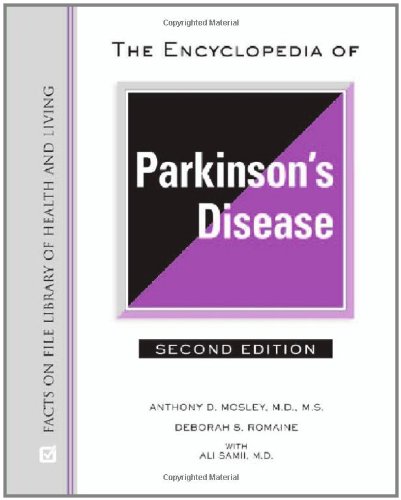

Most ebook files are in PDF format, so you can easily read them using various software such as Foxit Reader or directly on the Google Chrome browser.
Some ebook files are released by publishers in other formats such as .awz, .mobi, .epub, .fb2, etc. You may need to install specific software to read these formats on mobile/PC, such as Calibre.
Please read the tutorial at this link: https://ebookbell.com/faq
We offer FREE conversion to the popular formats you request; however, this may take some time. Therefore, right after payment, please email us, and we will try to provide the service as quickly as possible.
For some exceptional file formats or broken links (if any), please refrain from opening any disputes. Instead, email us first, and we will try to assist within a maximum of 6 hours.
EbookBell Team

4.0
46 reviews
ISBN 10: 081607674X
ISBN 13: 9780816076741
Author: Anthony D Mosley, Deborah S Romaine, M D Samii, Ali
Each year about half a million Americans are diagnosed with Parkinson's disease, with about 1.2 million people in the United States and Canada currently suffering from it. This chronic neurological disorder appears most commonly in people age 50 and over, though recent trends have shown the disease developing more often in those age 40 and under. Recent developments in Parkinson's disease research and the completion of the Human Genome Project have led to a better understanding of the role of genetics in causing Parkinson's disease.
Since publication of the first edition of The Encyclopedia of Parkinson's Disease, several studies have concluded, new studies have begun, and treatment approaches and recommendations have changed. Updated to reflect the latest research and trends in diagnosing and treating this disorder, this revised edition presents more than 650 entries explaining the complex issues and topics related to Parkinson's, including etiology, surgeries, research, medical terms, and much more. New information has been added on deep brain stimulation therapy, dopaminergic cell replacement, dopamine agonist therapy, breakthroughs in understanding the etiology and epidemiology of Parkinson's disease, and many other topics. Appendixes include a directory of organizations and resources as well as a directory of state Medicaid offices.
Part I: The Science of Parkinson's Disease
Part II: Symptoms, Signs, and Diagnosis
Part III: Treatments and Management
Part IV: Research and Future Directions
Part V: Living with Parkinson's
Part VI: Related Conditions and Concepts
the encyclopedia of parkinson's disease
the history of parkinson's disease
history of parkinson's disease pdf
the definition of parkinson's disease
a parkinson's disease
Tags: Anthony D Mosley, Deborah S Romaine, M D Samii, Ali, Encyclopedia